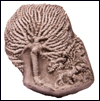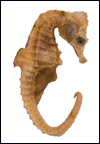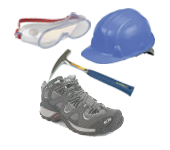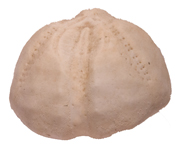Fossils
Fossils are the preserved remains or traces of animals (also known as zoolites), plants, and other organisms from the remote past. The totality of fossils, both discovered and undiscovered, and their placement in fossiliferous (fossil-containing) rock formations and sedimentary layers(strata) is known as the fossil record.
Ammonites
 They are an extinct group of marine invertebrate animals. Ammonites (Ammonitida) were shelled cephalopod molluscs that lived throughout the world’s oceans during the Mesozoic (Triassic, Jurassic and Cretaceous periods). They were an extremely successful order, as evidenced by the frequency that their remains are found.
They are an extinct group of marine invertebrate animals. Ammonites (Ammonitida) were shelled cephalopod molluscs that lived throughout the world’s oceans during the Mesozoic (Triassic, Jurassic and Cretaceous periods). They were an extremely successful order, as evidenced by the frequency that their remains are found.
 Cardioceras is a member of the Ammonites. Its shell is circular in outline and ribbed, with a prominent crest along the outer margin.
Cardioceras is a member of the Ammonites. Its shell is circular in outline and ribbed, with a prominent crest along the outer margin.
Belemnites
 An extinct cephalopod group which was particularly important during the Jurassic & Cretaceous. They were superficially squid-like. They possessed ten arms of equal length studded with small inward-curving hooks used for grasping prey. However, they lacked the pair of specialized tentacles present in modern squid.
An extinct cephalopod group which was particularly important during the Jurassic & Cretaceous. They were superficially squid-like. They possessed ten arms of equal length studded with small inward-curving hooks used for grasping prey. However, they lacked the pair of specialized tentacles present in modern squid.
Bivalves
They are the class of marine and freshwater molluscs with laterally compressed bodies enclosed by a shell in two hinged parts. They include clams, oysters, mussels, scallops, and numerous other families.
Clams
These are animals that burrow under the sea floor. They are bivalves, molluscs that have two shells that protect a soft body. There are over 15,000 different species of clams worldwide.
 Mya is a genus of saltwater clams, marine bivalve molluscs in the family Myidae. Live at great depths, but do not burrow rapidly.
Mya is a genus of saltwater clams, marine bivalve molluscs in the family Myidae. Live at great depths, but do not burrow rapidly.
 Pecten is a genus of large scallops or saltwater clams, marine bivalve molluscs in the family Pectinidae, the scallops. They have inhabited the Earth for over 500 million years. Bivalves, which belong to the phylum Mollusca and class Bivalvia, have two hard, usually bowl-shaped, shells (called valves) enclosing the soft body. The valves are the parts usually found as fossils, but decay of the elastic hinge tissue that joins them means that they are rarely preserved together. This speciem comes from Staithes, North Yorkshire, England.
Pecten is a genus of large scallops or saltwater clams, marine bivalve molluscs in the family Pectinidae, the scallops. They have inhabited the Earth for over 500 million years. Bivalves, which belong to the phylum Mollusca and class Bivalvia, have two hard, usually bowl-shaped, shells (called valves) enclosing the soft body. The valves are the parts usually found as fossils, but decay of the elastic hinge tissue that joins them means that they are rarely preserved together. This speciem comes from Staithes, North Yorkshire, England.
Brachiopod
 They are marine animals that have hard "valves" (shells) on the upper and lower surfaces, unlike the left and right arrangement in bivalve molluscs. Brachiopod valves are hinged at the rear end, while the front can be opened for feeding or closed for protection. Lifespans range from 3 to over 30 years. Brachiopods live only in the sea, and most species avoid locations with strong currents or waves.
They are marine animals that have hard "valves" (shells) on the upper and lower surfaces, unlike the left and right arrangement in bivalve molluscs. Brachiopod valves are hinged at the rear end, while the front can be opened for feeding or closed for protection. Lifespans range from 3 to over 30 years. Brachiopods live only in the sea, and most species avoid locations with strong currents or waves.
Corals
 They are marine animals in class Anthozoa of phylum Cnidaria typically living in compact colonies of many identical individual "polyps". They are Simple animals having skeletons composed of calcite and frequently preserved as fossils.
They are marine animals in class Anthozoa of phylum Cnidaria typically living in compact colonies of many identical individual "polyps". They are Simple animals having skeletons composed of calcite and frequently preserved as fossils.
Semibalanus Balanoides
.jpg) It is a common and widespread boreo-arctic species of acorn barnacle. It is common on rocks and other substrates in the intertidal zone of north-western Europe and both coasts of North America. They grow up to 15 millimetres (0.6 in) in diameter, and are sessile, living attached to rocks and other solid substrates. They have six greyish wall plates surrounding a diamond-shaped operculum.
It is a common and widespread boreo-arctic species of acorn barnacle. It is common on rocks and other substrates in the intertidal zone of north-western Europe and both coasts of North America. They grow up to 15 millimetres (0.6 in) in diameter, and are sessile, living attached to rocks and other solid substrates. They have six greyish wall plates surrounding a diamond-shaped operculum.
Diplomystus
 It is an extinct genus of freshwater non-clupeoid clupeomorph fish distantly related to modern-day extant herrings, alewives, and sardines. There are seven species of Diplomystus, the one I have is Dentatus, but it is only a replica.
It is an extinct genus of freshwater non-clupeoid clupeomorph fish distantly related to modern-day extant herrings, alewives, and sardines. There are seven species of Diplomystus, the one I have is Dentatus, but it is only a replica.
Echinoderms
The adults are recognizable by their (usually five-point) radial symmetry, and include such well-known animals as starfish, sea urchins, sand dollars, and sea cucumbers. Echinoderms are found at every ocean depth, from the intertidal zone to the abyssal zone.
![]() Sand Dollars are from the class of marine animals known as Echinoids, spiny skinned creatures. They live beyond mean low water on top of or just beneath the surface of sandy or muddy areas. The spines on the somewhat flattened underside of the animal allow it to burrow or to slowly creep through the sand. Fine, hair-like cilia cover the tiny spines. These cilia, in combination with a mucous coating, move food to the mouth opening which is in the centre of the star shaped grooves on the underside of the animal. Its food consists of plankters and organic particles that end up in the sandy bottom. These specimens came from the USA.
Sand Dollars are from the class of marine animals known as Echinoids, spiny skinned creatures. They live beyond mean low water on top of or just beneath the surface of sandy or muddy areas. The spines on the somewhat flattened underside of the animal allow it to burrow or to slowly creep through the sand. Fine, hair-like cilia cover the tiny spines. These cilia, in combination with a mucous coating, move food to the mouth opening which is in the centre of the star shaped grooves on the underside of the animal. Its food consists of plankters and organic particles that end up in the sandy bottom. These specimens came from the USA.
Gastropods
 They are more commonly known as snails and slugs, are a large taxonomic class within the phylum Mollusca. The class Gastropoda includes snails and slugs of all kinds and all sizes from microscopic to large. There are many thousands of species of sea snails and sea slugs, as well as freshwater snails and freshwater limpets, as well as land snails and land slugs.
They are more commonly known as snails and slugs, are a large taxonomic class within the phylum Mollusca. The class Gastropoda includes snails and slugs of all kinds and all sizes from microscopic to large. There are many thousands of species of sea snails and sea slugs, as well as freshwater snails and freshwater limpets, as well as land snails and land slugs.
Sea Snails
This is a common name for snails that normally live in saltwater, in other words it is a common name for marine gastropod molluscs which have shells.
![]() Pāua is the Māori name given to three species of large edible sea snails, marine gastropod molluscs which belong to the family Haliotidae. Paua is a species of abalone unique to New Zealand and the most colourful species. The colour in the paua shell changes when viewed at different angles. This iridescence is similar to that of Mother of Pearl shell, but far more brilliant. Paua meat is a traditional delicacy for the Maori, essential for a good wedding feast or celebration.
Pāua is the Māori name given to three species of large edible sea snails, marine gastropod molluscs which belong to the family Haliotidae. Paua is a species of abalone unique to New Zealand and the most colourful species. The colour in the paua shell changes when viewed at different angles. This iridescence is similar to that of Mother of Pearl shell, but far more brilliant. Paua meat is a traditional delicacy for the Maori, essential for a good wedding feast or celebration.
Kauri Gum

 It is a fossilized resin detracted from Kauri trees (Agathis australis), which is used for chewing or tattooing, and made into jewellery. Kauri gum formed when resin from a kauri trees leaked out through fractures or cracks in the bark, hardening with the exposure to air. Lumps commonly fell to the ground and became covered with soil and forest litter, eventually fossilising. It comes from around New Zealand.
It is a fossilized resin detracted from Kauri trees (Agathis australis), which is used for chewing or tattooing, and made into jewellery. Kauri gum formed when resin from a kauri trees leaked out through fractures or cracks in the bark, hardening with the exposure to air. Lumps commonly fell to the ground and became covered with soil and forest litter, eventually fossilising. It comes from around New Zealand.
Metasequoia
 The Dawn Redwood a beautiful Metasequoia occidentalis plant fossils come from the lacustrine deposits of the McAbee Flora of the Eocene of British Columbia, Canada. Note the fine preservational details. During the Eocene, the region was dominated by a shallow lake. Plant matter which fell into the water was covered with a fine layer of silt which built up over the years as a result of deposition of diatoms which bloomed in the lake each spring and died in the summer.
The Dawn Redwood a beautiful Metasequoia occidentalis plant fossils come from the lacustrine deposits of the McAbee Flora of the Eocene of British Columbia, Canada. Note the fine preservational details. During the Eocene, the region was dominated by a shallow lake. Plant matter which fell into the water was covered with a fine layer of silt which built up over the years as a result of deposition of diatoms which bloomed in the lake each spring and died in the summer.
Sagenocrinites
 It is an extinct genus of crinoid from the Silurian of North America. The stem of Sagenocrinites is cylindrical and composed of numerous very thin columnals. Its crown is very broad and oval in shape. The polygonal plates of the lower arms display clear growth lines and form part of the cup. The free parts of the arms are short and are made up of many small plates. The very compact form of this species suggests that it had adapted to relatively turbulent sea bed conditions. The one I have is a replica.
It is an extinct genus of crinoid from the Silurian of North America. The stem of Sagenocrinites is cylindrical and composed of numerous very thin columnals. Its crown is very broad and oval in shape. The polygonal plates of the lower arms display clear growth lines and form part of the cup. The free parts of the arms are short and are made up of many small plates. The very compact form of this species suggests that it had adapted to relatively turbulent sea bed conditions. The one I have is a replica.
Seahorse
 It is the title given to 54 species of marine fish in the genus Hippocampus. Seahorses are mainly found in shallow tropical and temperate waters throughout the world, and prefer to live in sheltered areas such as beds, estuaries coral reefs,or mangroves. Seahorses range in size from 0.6 to 14 in (1.5 to 35.5 cm).
It is the title given to 54 species of marine fish in the genus Hippocampus. Seahorses are mainly found in shallow tropical and temperate waters throughout the world, and prefer to live in sheltered areas such as beds, estuaries coral reefs,or mangroves. Seahorses range in size from 0.6 to 14 in (1.5 to 35.5 cm).
Sharks Teeth
![]() A shark tooth is one of the numerous teeth of a shark. Sharks continually shed their teeth, and some Carcharhiniformes shed approximately 35,000 teeth in a lifetime. In some geological formations, shark's teeth are a common fossil.
A shark tooth is one of the numerous teeth of a shark. Sharks continually shed their teeth, and some Carcharhiniformes shed approximately 35,000 teeth in a lifetime. In some geological formations, shark's teeth are a common fossil.

